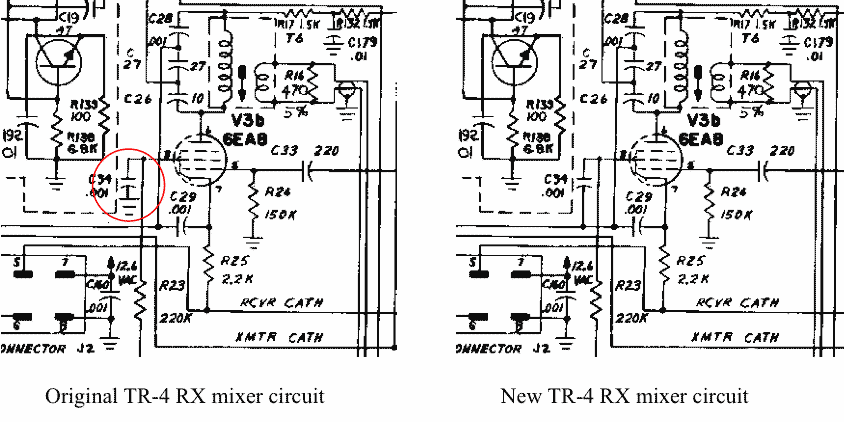| Receiver Mixer Improvement for
the Drake TR-4
by Giorgio - IN3IEX |
|
Drake
TR-4 transceivers employ a pentode in the first (and only) receiver
mixer. This device somehow defines the ability of the receiver to
detect faint signals near stronger ones. In pentodes, cathode
current is determined by the voltage between first grid and cathode and
the voltage between screen grid and cathode. If you look at the
schematic diagram, and put a “virtual” ground on
cathode, you see that input signal is applied to the first grid and
local oscillator is applied to both first and screen grids.
Conceptually it is like using a diode mixer and applying the input
signal to first port and local oscillator to both first and second
port! This is certainly a method to degrade the performances. The mixer
design can be corrected at no cost, as shown below.
 Figure 1 - Mixer Mods The same mod applies to V1b, the premixer pentode. This is useful for the 40 m band. In fact the crystal for 40 meters is 21.5 MHz. With VFO at 5.4 MHz we have 21.5 – 5.4 - 9 = 7.1 MHz. But we also have 5.4 * 3 – 9 = 7.2 MHz, which is unwanted. Reducing the “chaos” produced by the two VFO inputs to V1b, improves the situation. SPICE simulations and experiments have shown a remarkable improvement. Just try and let me know.... Best regards. IN3IEX - Giorgio Fontana, Trento, Italy (JN56NB). Here is a PDF version, suitable for printing. |